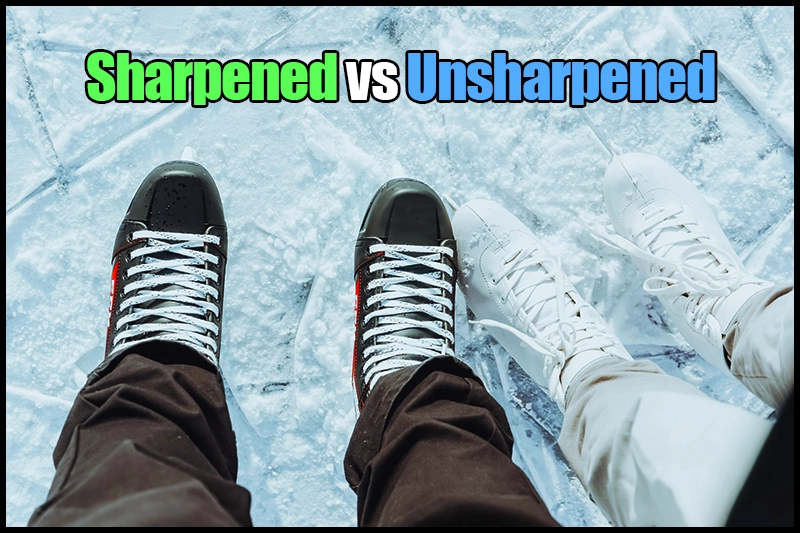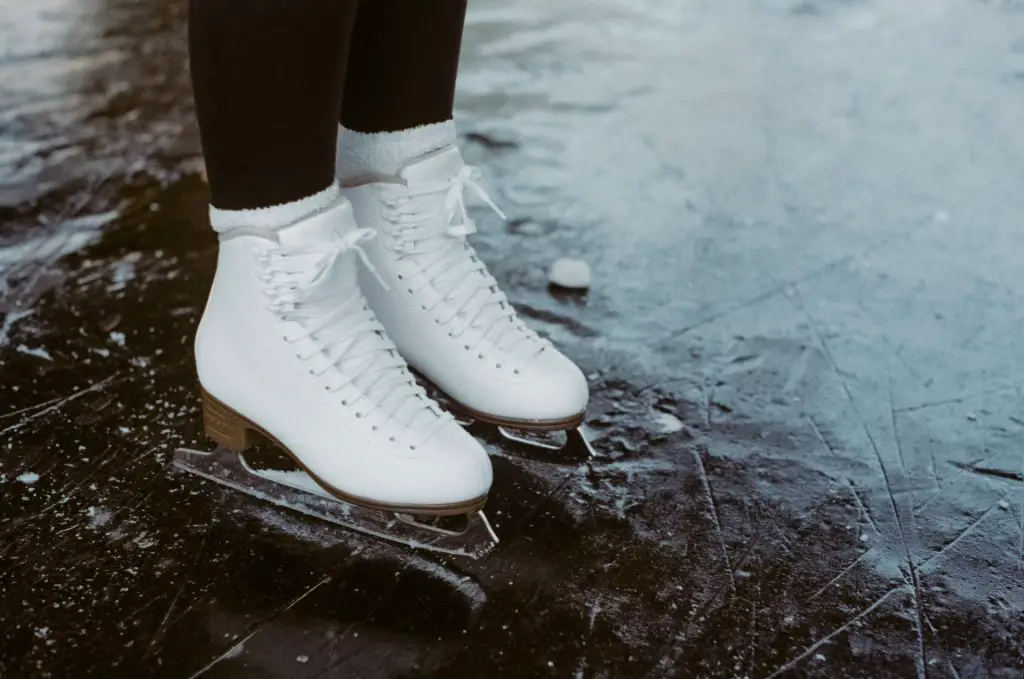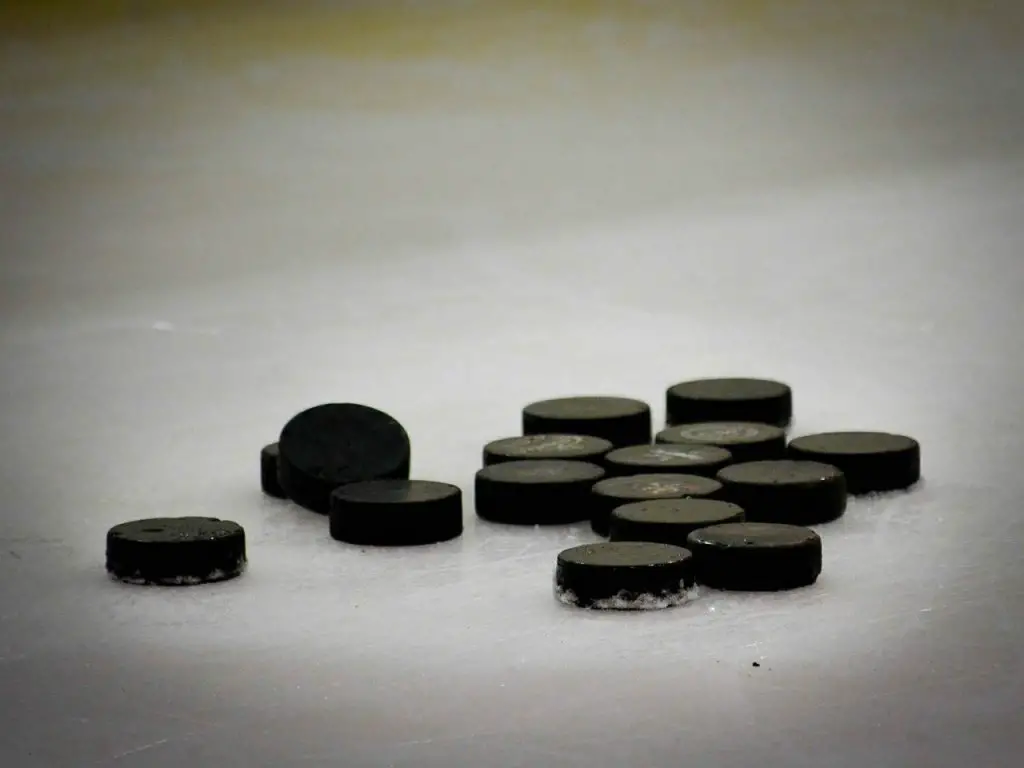Sharpened vs unsharpened skates, it’s a debate that has been going on for years. Some people prefer the nice, crisp edge of a freshly sharpened skate blade, while others can’t seem to be a decent skater without dull blades.
Personally, when I’m at the rink, I prefer the feel of my edges after they have been recently sharpened with a bigger hollow radius. But which way is actually better and can improve your skating the most?
Sharpened skates are better than unsharpened skates. Skaters need sharp edges for every part of ice skating; accelerating, turning and stopping. People who skate with dull skate blades tend to be worse skaters than those who skate with sharp skate blades.
To understand this in more depth, you first need to understand hollows and their radius.
Let’s take a look.
Table of Contents
Understanding skate sharpening hollows
The first few times people who enjoy “duller” blades go through the skate sharpening process, they will ask the person at the counter to “not sharpen them too much”. In reality, you want your steel sharp, you just want a different hollow radius. But most people, myself including, don’t learn about hollows till later on.
What are skate sharpening hollows? A skate sharpening hollow is the groove that is cut into the bottom of your skate blades. The radius of a hollow determines the depth at which the groove is cut into your blades. The most common skate sharpening hollows are: 1″, 7/8″, 3/4″, 5/8″, 9/16″, 1/2″, 7/16″, 3/8″.
Not sure which hollow suits you best? Here’s a simple rule of thumb.
Shallow hollow
A shallow hollow is the result of a large radius being used to sharpen your steel, 1″ for example.
With a shallow hollow, your blades will grip the ice less, providing you with a noticeably smoother glide. Maintaining speed with a shallow hollow requires far less effort than a deep hollow.
A shallow hollow (large radius) is recommended for people who are just learning how to skate, as it is more forgiving. Shallow hollows are also typically used by hockey players who need the ability to make quick stops, frequent changes in direction and skate with efficient speed.
Deep hollow

A deep hollow is when a small radius is used, 3/8″ for example.
With a deep hollow, you will have more of a bite in your blades, resulting in better grip as your blades will bite the ice surface more. The extra grip will allow you to accelerate faster than someone with a shallow hollow.
Deep hollows (small radius) are typically used by figures skaters as they need a solid grip for when they land on the ice after a jump, and the ability to make quick, tight turns.
Heavier people will have a hard time with a deep hollow sharpening, as their weight in addition to the sharp edges will cause the blades to dig into the ice surface, making simple things like stopping a tough chore.
So, chances are if you prefer a dull or blunt skate blade and can’t stand the feel of your steel after it’s just been sharpened, it’s more than likely that when you went through the process of having your steel sharpened, the person who did it used a hollow that doesn’t suit your skating style.
Next time you go to get a pair of skates sharpened, ask the person behind the counter what hollow they used. If you want your steel to have less of a bite, ask for a bigger hollow and keep going until you find the right hollow for you.
You don’t want dull blades, you want a different hollow.
Sharpened vs unsharpened skates in hockey
Some hockey players like the feeling of skating on unsharpened blades. Like we discussed above, it’s likely that they don’t actually enjoy a dull hockey skate, but rather they have yet to find the hollow they enjoy skating on.
Skating in ice hockey skates with dull steel does come with its draw backs. People who prefer skating on dull, unsharpened steel tend to be worse skaters than those who prefer skating with sharp blades.
Don’t shoot the messenger.
When accelerating, a player will use their edges to push off and pick up speed. If you’re playing with an unsharpened blade, and you don’t have much of an edge, this means your acceleration is going to take a hit, and you won’t be able to wheel as fast as you should be.
In hockey, we use our edges a lot when turning. Without proper edges, you run the risk of blowing a tire while attempting a sharp turn. Being able to turn on a dime requires good inside and outside edges.
Having little to no edges on your blades can also affect your stopping and how quickly you are able to change directions on the ice. During play, this can lead to you being burnt in transition.
When it comes down to it, playing with unsharpened blades will provide you with less balance, and control.
Sharpened vs unsharpened skates in figure skating
I reached out to my friend Stacey for this part, as she is the resident figure skater.
As a figure skater, sharp blades are a necessity! Not only do our sharp edges help us keep our balance, but they are also key in helping us turn and maneuver around the ice!
Dull figure skates will cause you to skid into spins, lose grip when going around an edge or making a turn, and can make landing after your jumps much more challenging!
Figure skaters should be getting their steel sharpened every 20-30 hours of ice time.
If you would like more information, you can check out my article, where I answered 7 different questions about sharpening figure skates.
Final thoughts
Your blades should be sharpened regularly. The pros of skating on a sharp blade far outweigh the pros of skating on an unsharpened blade.
If you like the feel of unsharpened blades, chances are you should experiment with the different hollows that professional sharpeners can apply to your blades, you may be surprised!
Let me know if this post helped you!




